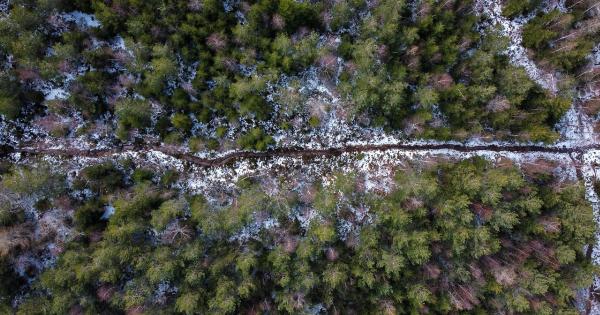Snowflakes are beautiful and fascinating, but there’s more to these icy formations than just their aesthetics.
The science behind snowflakes is complex and intriguing, and understanding their formation and behavior can help us appreciate their beauty even more.
What are snowflakes?
Snowflakes are ice crystals that form in the atmosphere when water vapor freezes. The process of snowflake formation is complex and depends on a number of factors, including temperature, humidity, and the presence of other particles in the atmosphere.
Each snowflake is unique in its shape and size, resulting in the beautiful and intricate patterns that we see when snowflakes land on the ground or on our windows.
The formation of snowflakes
The formation of snowflakes begins when water vapor in the atmosphere turns into ice crystals. This process is called nucleation and usually occurs when the temperature drops below freezing.
Once the ice crystal has formed, it begins to grow as more water vapor freezes onto its surface. The shape and size of the snowflake depend on factors such as temperature, humidity, and the speed at which the snowflake is falling.
The conditions in which snowflakes form can also affect their shape. For example, snowflakes formed in cold, dry air tend to be small, simple, and hexagonal in shape. Snowflakes formed in warmer, wetter air tend to be larger and more complex in shape.
The structure of snowflakes
Snowflakes are made up of ice crystals that are arranged in a hexagonal or six-sided structure. Each snowflake is made up of many individual ice crystals, which are called snow crystals.
The shape and structure of snowflakes are determined by the way that water molecules bond together as they freeze. Water molecules are made up of one oxygen atom and two hydrogen atoms, and they bond together in a specific way when they freeze.
As a result of these unique bonding properties, snowflakes have a complex and intricate structure. The arrangement of the individual ice crystals determines the overall shape and pattern of the snowflake.
Types of snowflakes
There are many different types of snowflakes, each with its own unique shape and structure. Some common types of snowflakes include:.
Stellar dendrites
Stellar dendrites are the classic six-pointed snowflakes that most people think of when they think of snowflakes. They have a star-like shape with branches extending outwards from a central point.
Columnar crystals
Columnar crystals are long and thin, with a cylindrical shape. They tend to be less complex in structure than other types of snowflakes.
Needle crystals
Needle crystals are long and thin, but less cylindrical in shape than columnar crystals. They often have a hexagonal or triangular shape, with pointed ends.
Plate crystals
Plate crystals are flat and thin, with a hexagonal or circular shape. They tend to be less intricate in structure than other types of snowflakes.
The behavior of snowflakes
The behavior of snowflakes can be affected by a number of factors, including temperature, humidity, and the physical properties of the snowflake itself.
One interesting behavior of snowflakes is that they can change shape as they fall through the atmosphere. This is because the conditions in the atmosphere change as the snowflake falls, which affects the way that it grows and develops.
Snowflakes can also behave differently when they land on different surfaces.
For example, snowflakes that land on a smooth surface like a window pane tend to stick together and form a solid mass, while snowflakes that land on a rough or textured surface tend to stay separate and retain their individual shape.
Conclusion
Snowflakes are not just beautiful and fascinating to look at – they also represent some of the most intricate and complex structures found in nature.
Understanding the science behind snowflake formation and behavior can help us appreciate their beauty even more, and can give us a deeper appreciation for the wonders of the natural world.































